
A cocktail is an alcoholic mixed drink or non alcoholic mixed drink. Most commonly, a cocktail is a combination of one or more spirits mixed with other ingredients, such as juices, flavored syrups, tonic water, shrubs, and bitters. Cocktails vary widely across regions of the world, and many websites publish both original recipes and their own interpretations of older and more famous cocktails.
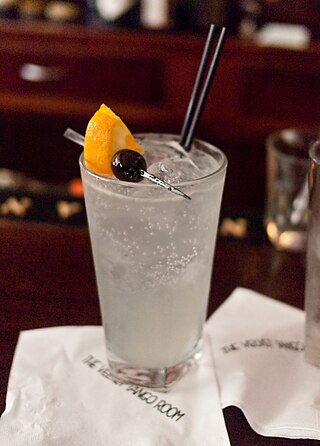
The Tom Collins is a Collins cocktail made from gin, lemon juice, sugar, and carbonated water. First memorialized in writing in 1876 by Jerry Thomas, "the father of American mixology", this "gin and sparkling lemonade" drink is typically served in a Collins glass over ice. A non-alcoholic "Collins mix" mixer is produced, enjoyed by some as a soft drink.

The sidecar is any cocktail traditionally made with cognac, orange liqueur, plus lemon juice. In its ingredients, the drink is perhaps most closely related to the older brandy crusta, which differs both in presentation and in proportions of its components.

The martini is a cocktail made with gin and vermouth, and garnished with an olive and/or a lemon twist. Over the years, the martini has become one of the best-known mixed alcoholic beverages. A common variation, the vodka martini, uses vodka instead of gin for the cocktail's base spirit.

The Singapore sling is a gin-based sling cocktail from Singapore. This long drink was developed in 1915 by Ngiam Tong Boon, a bartender at the Long Bar in Raffles Hotel, Singapore. It was initially called the gin sling.

A sour is a traditional family of mixed drinks. Sours belong to one of the old families of original cocktails and are described by Jerry Thomas in his 1862 book How to Mix Drinks.

White lady is a classic cocktail that is made with gin, Cointreau or triple sec, fresh lemon juice and an optional egg white. It belongs to the sidecar family, made with gin in place of brandy. The cocktail sometimes also includes additional ingredients, for example egg white, sugar, cream, or creme de menthe.

A "fizz" is a mixed drink variation on the older sours family of cocktail. Its defining features are an acidic juice and carbonated water. It typically includes gin or rum as its alcoholic ingredient.

A Bloody Mary is a cocktail containing vodka, tomato juice, and other spices and flavorings including Worcestershire sauce, hot sauces, garlic, herbs, horseradish, celery, olives, pickled vegetables, salt, black pepper, lemon juice, lime juice and celery salt. Some versions of the drink, such as the "surf 'n turf" Bloody Mary, include shrimp and bacon as garnishes. In the United States, it is usually consumed in the morning or early afternoon, and is popular as a hangover cure.

The aviation is a cocktail made with gin, maraschino liqueur, crème de violette and lemon juice. Some recipes omit the crème de violette. It is served straight up, in a cocktail glass.
The corpse reviver family of named cocktails are sometimes drunk as alcoholic hangover tongue-in-cheek "cures", of potency or characteristics to be able to revive even a dead person. Some corpse reviver cocktail recipes have been lost to time, but several variations commonly thought to be tied to the American Bar at the Savoy Hotel remain, especially those espoused by Harry Craddock that originally date back to at least 1930 and are still being made. Many "reviver" variations exist and the word is sometimes used as a generic moniker for any morning-after cocktail, also known as a "hair of the dog".
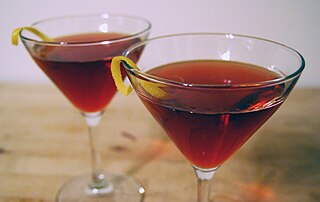
The old pal is a cocktail consisting of equal parts rye whiskey, French vermouth (dry), and Campari.
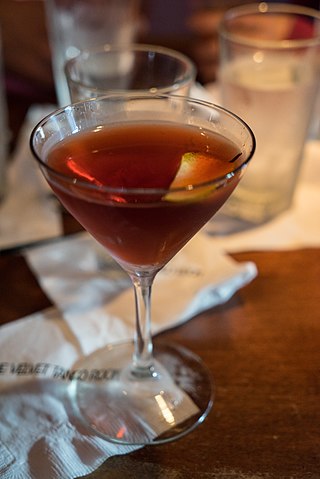
The boulevardier cocktail is an alcoholic drink composed of whiskey, sweet vermouth, and Campari. It originated as an obscure cocktail in late 1920s Paris, and was largely forgotten for 80 years, before being rediscovered in the late 2000s as part of the craft cocktail movement, rapidly rising in popularity in the 2010s as a variant of the negroni, and becoming an IBA official cocktail in 2020.
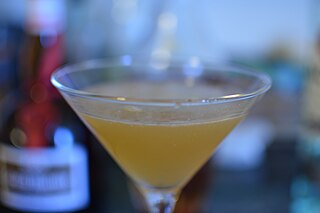
The between the sheets is a cocktail consisting of white rum, cognac, triple sec, and lemon juice. When made with gin, instead of rum and cognac, it's called a "maiden's prayer".
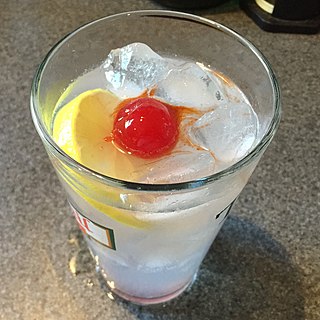
A John Collins is a long drink of London dry gin, lemon juice, sugar and carbonated water, which was attested in 1869, but may be older. It is believed to have originated with a headwaiter of that name who worked at Limmer's Old House in Conduit Street in Mayfair, which was a popular London hotel and coffee house around 1790–1817. It is essentially a variant of Tom Collins, evidently a latter name for the same drink.
The Blackthorn is an Irish whiskey or sloe gin based cocktail. Both versions emerged in the late 19th and early 20th century.

The doctor cocktail is a pre-prohibition era cocktail that traces in drink guides to as far back as 1917, when it appeared in Hugo R. Ensslin's Recipes for Mixed Drinks. As originally described the cocktail called simply for Swedish Punsch mixed with lime juice.

The Airmail or Air Mail is a classic cocktail based on rum, lime or lemon juice, honey, and sparkling wine. It was probably created during or shortly after the period of prohibition in the United States of America or on Cuba, i.e. in the 1920s or 1930s.


















